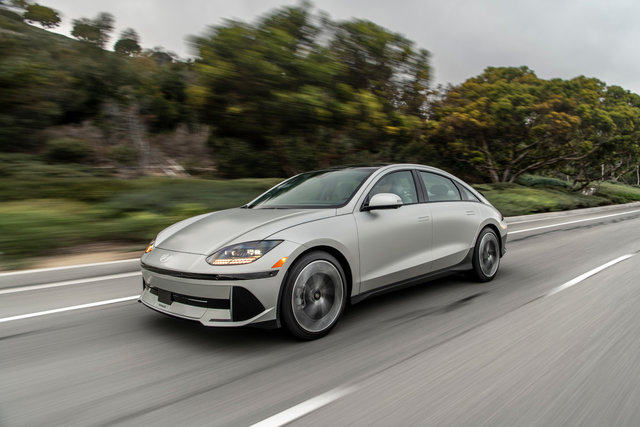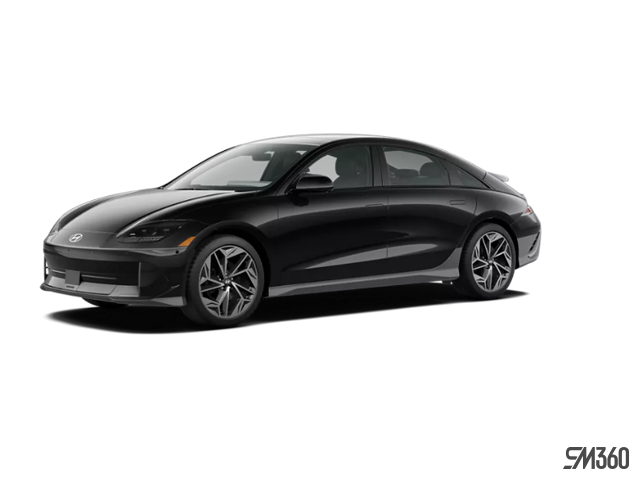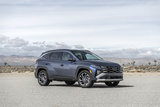Hyundai's range of electric vehicles is one of the most comprehensive in the industry and one of the most attractive for those looking for their next EV. Both the Hyundai Ioniq 5 2024 and the Hyundai Ioniq 6 2024 have won numerous awards over the years and both stand out, offering solid performance, impressive range and cutting-edge technology. While the two models have distinct identities and appeal to different types of drivers, they also share a number of key features that set them apart in the competitive electric vehicle market. Let's take a closer look at the key points where these vehicles converge, while discussing the significant differences that separate them.
Shared Technology and Platform
Both the Hyundai Ioniq 5 and Ioniq 6 are based on Hyundai's Global Electric Modular Platform (E-GMP), providing a foundation for strong performance, excellent handling and advanced technology. Both vehicles use the same battery and motor options, including a 77.4 kWh lithium-ion battery combined with a single-motor configuration with rear-wheel drive (RWD) or a dual-motor configuration with all-wheel drive (AWD). This shared technology translates into similar power outputs: 225 bhp for rear-wheel drive versions and 320 bhp for all-wheel drive versions.
Performance is also similar in both models, with permanent magnet synchronous motors and a range of efficient charging options. Home charging (level 2) is almost identical, requiring around 6 to 7 hours for a full charge, while ultra-fast charging (350 kW) allows either vehicle to be recharged to 80% in around 17 to 18 minutes.
Comparable energy efficiency and autonomy
Range is a crucial factor when buying an EV, and both the Ioniq 5 and Ioniq 6 offer competitive figures. Although both vehicles share the same battery, design differences influence their range. The Ioniq 6, with its aerodynamic saloon design, clearly stands out in terms of efficiency and offers a greater range. In its most efficient configuration with 18-inch wheels, the Ioniq 6 can travel up to 581 km on a single charge, while the rear-wheel drive version of the Ioniq 5 offers 488 km.
However, when comparing the all-wheel-drive configurations, the range gap narrows. The Ioniq 5 covers up to 414 km, while the Ioniq offers between 435 and 509 km, depending on wheel size. Although the Ioniq 6 is clearly designed to maximise efficiency, both models offer solid performance with reasonable recharge times, making either an ideal choice for long journeys.
Interior layout and features
Both vehicles feature modern, technological interiors designed to enhance the driving experience. You'll find similar infotainment systems, including twin 12.3-inch screens and customisable ambient lighting, which add to the futuristic atmosphere in both cabs. They also share intuitive driver assistance features such as adaptive cruise control, lane keeping assist and advanced safety systems.
In terms of interior volume, the Ioniq 5 has an advantage thanks to its larger, SUV-inspired design. It offers a more spacious cabin, with greater passenger volume (3,016 litres compared with 2,915.9 litres) and better headroom in both rows. The Ioniq 5's front legroom (1,138 mm) is almost equalled by the Ioniq 6's 1,154 mm. Rear legroom is also close, with 1,002 mm for the Ioniq 5 compared with 996 mm for the Ioniq 6.
Both Versatile
In terms of practicality, the SUV-inspired design of the Ioniq 5 offers significant advantages when it comes to loading. The rear hatch opens onto a cargo space of 770 litres with the seats up and 1,680 litres with the rear seats folded, making it much more flexible for transporting bulky items. As a saloon, the Ioniq 6 has a much smaller boot of 316 litres and no folding rear seats, which limits its versatility.
In addition, both vehicles are equipped with frunks (front panniers), although the Ioniq 5's frunk is slightly larger at 24 litres, compared with 14.5 litres for the Ioniq 6. These extra storage spaces add convenience, particularly for charging cables or smaller items.
Sporty and Dynamic Driving version
One area where the Ioniq 5 stands out is the availability of the high-performance Ioniq 5 N model. This sporty version, absent from the Ioniq 6 range, offers increased power and handling, meeting the expectations of enthusiasts looking for a more dynamic driving experience. The Ioniq 5 N offers more aggressive acceleration, a sportier suspension and specific design tweaks that give it a distinctive character within the range.
On the other hand, although the Ioniq 6 doesn't have a dedicated performance model, it is designed for aerodynamic efficiency. This translates into a smoother, quieter ride, making it particularly appealing to those who prefer a refined, comfortable driving experience.
Conclusion: Which model to choose?
The Hyundai Ioniq 5 and Ioniq 6 2024 cater for different preferences while maintaining a common set of strengths. The Ioniq 5, with its spacious interior, flexible load space and SUV-like practicality, is ideal for families or those who appreciate versatility. Meanwhile, the Ioniq 6, with its extended range and sleek design, is better suited to drivers who prioritise efficiency, style and a classic saloon layout.
Ultimately, whether you opt for the more practical Ioniq 5 or the more refined Ioniq 6, both vehicles offer solid electric performance, advanced features and the reliability for which Hyundai is renowned. Your choice will probably depend on which design and driving experience best suits your lifestyle.







